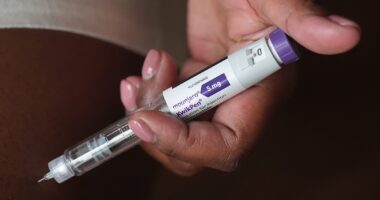Share this @internewscast.com
Type 2 diabetes is a widespread condition in the UK, affecting millions of people. However, if you’ve been diagnosed as prediabetic by a healthcare professional, there are strategies to prevent and potentially ‘reverse’ the issue before it gets worse.
Prediabetes, also referred to as non-diabetic hyperglycaemia, is a state where your blood sugar levels exceed normal levels but aren’t high enough for a diabetes diagnosis. It’s a significant health concern that heightens your risk of developing type 2 diabetes, heart disease and stroke.
Often, prediabetes comes with little to no symptoms, making it challenging to identify before it progresses into the diabetic range. Nevertheless, there are certain warning signs to be vigilant about that could indicate a problem, reports Surrey Live.
The Mayo Clinic suggests eight tell-tale signs that might help in determining what to discuss with a doctor. These include:
- Fatigue: Fluctuating blood sugar levels can cause fatigue.
- Blurred vision: Changes in blood sugar levels can cause blurred vision.
- Increased hunger: Also known as polyphagia, this is a common symptom of prediabetes.
- Unexplained weight loss: Even if you’re eating more, this can be an early warning sign of prediabetes.
- Darkened skin: This can appear on the neck, armpits, and groin.
- Skin tags: While harmless, having many skin tags may be a sign of type 2 diabetes.
- Slow healing of cuts and wounds: High blood sugar levels can damage nerves and blood vessels, impairing blood circulation.
- Increased thirst and frequent urination: When blood sugar levels are high, the kidneys work harder to filter excess glucose.
The cause of prediabetes isn’t fully understood, but it seems that family history and genetics play a crucial part. The only way to determine if you have prediabetes for sure is through a blood test administered by your doctor.
The NHS Health Check, offered to adults aged 40-74, includes a diabetes risk assessment and can help detect early signs of type 2 diabetes. If you’re in this age group and haven’t had a check in the last five years, you should be invited for one.
By recognising the condition and implementing lifestyle changes, you may be able to lower your risk of developing type 2 diabetes. This involves weight loss, a healthy diet, regular exercise, good hydration, sufficient sleep, alcohol moderation, quitting smoking (where it applies) and reducing sugar intake.
Other good lifestyle changes to consider include:
- Avoiding excessive intake of added sugars by limiting sugary beverages, cakes, cookies, sweets and snacks.
- Limiting portion sizes of refined carbohydrate foods such as white bread, white rice and white pasta.
- Incorporating fibre to reach a goal of 25 to 30 grams per day by eating a variety of fruits, vegetables and whole grains.
- Limiting saturated fats by choosing lean protein and low-fat dairy.
The objective is to regulate blood sugar levels until medication is no longer needed. This is commonly referred to as Type 2 diabetes remission – when blood sugar levels fall below the diabetes range and medication such as insulin is no longer required.
The NHS spends at least £10 billion a year on diabetes which is about 10% of its entire budget. Almost 80% of the money the NHS spends on diabetes is on treating complications.
There’s no set timeframe for achieving this significant transformation. As per Diabetes UK, specialists are aware of people who have successfully put their diabetes into remission many years after diagnosis.
If you require help and guidance with this process, a useful guide is available on the Diabetes UK website. You can access it online here.
















